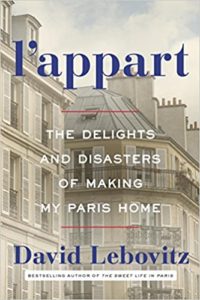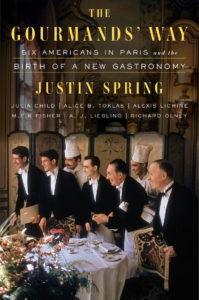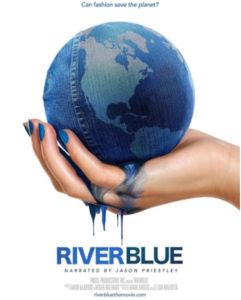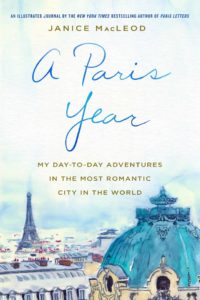 The Musée du Quai Branly-Jacques Chirac museum specializes in indigenous art and cultures of Africa, Asia, Oceania and the Americas. It opened in 2006 and is the newest of Paris’ major museums. A temporary exhibition at the museum “Peintures des Lointains” —looks at painters’ fascination with exotic people and places. It is the first time the museum has featured paintings from its vast collection of 450.000 objects . The painting exhibition includes mostly 19th century work from Ange Tissier’s “Odalisque” to daily life in Cairo by Emile Bernard to George Caitlin depictions of native Americans in the old west to Gauguin’s Tahiti. Continue reading “Painting Distant Lands”
The Musée du Quai Branly-Jacques Chirac museum specializes in indigenous art and cultures of Africa, Asia, Oceania and the Americas. It opened in 2006 and is the newest of Paris’ major museums. A temporary exhibition at the museum “Peintures des Lointains” —looks at painters’ fascination with exotic people and places. It is the first time the museum has featured paintings from its vast collection of 450.000 objects . The painting exhibition includes mostly 19th century work from Ange Tissier’s “Odalisque” to daily life in Cairo by Emile Bernard to George Caitlin depictions of native Americans in the old west to Gauguin’s Tahiti. Continue reading “Painting Distant Lands”
Delights and Disasters of Making My Paris Home
 “After a decade of living in Paris, it was time to make my dream come true: To own my own home in Paris, complete with my dream kitchen…” says author David Lebovitz discussing his new book “L’appart: The Delights and Disasters of Making My Paris Home.” Little did he know before embarking on this adventure that he would soon come face to face with France’s famed mind boggling red tape and quirky cultural idiosyncrasies that are challenging to even the most ardent anglo francophile. Continue reading “Delights and Disasters of Making My Paris Home”
“After a decade of living in Paris, it was time to make my dream come true: To own my own home in Paris, complete with my dream kitchen…” says author David Lebovitz discussing his new book “L’appart: The Delights and Disasters of Making My Paris Home.” Little did he know before embarking on this adventure that he would soon come face to face with France’s famed mind boggling red tape and quirky cultural idiosyncrasies that are challenging to even the most ardent anglo francophile. Continue reading “Delights and Disasters of Making My Paris Home”
Meet Raoul Hausmann the Dadasophe

“Vision in Action” —an exhibition at Paris’ Jeu de Paume— is an opportunity to discover the photographic work of Raoul Hausmann (1886-1971), one of the key figures in the Berlin Dada group, whose experimental photographic collages, poster poems, sound poetry and provocative art critiques had a profound influence on the European Avant-Garde in the aftermath of World War I (until May 20, 2018). Continue reading “Meet Raoul Hausmann the Dadasophe”
The Gourmand’s Way
 “The Gourmands’ Way: Six Americans in Paris and the Birth of a New Gastronomy,” is a group portrait of six legendary expat food writers who helped bring some of the French touch to American cuisine. The book revisits the fabled world of haute cuisine and the vibrant bohemian and artistic haunts of the Left Bank during the 50’s and 60’s. Continue reading “The Gourmand’s Way”
“The Gourmands’ Way: Six Americans in Paris and the Birth of a New Gastronomy,” is a group portrait of six legendary expat food writers who helped bring some of the French touch to American cuisine. The book revisits the fabled world of haute cuisine and the vibrant bohemian and artistic haunts of the Left Bank during the 50’s and 60’s. Continue reading “The Gourmand’s Way”
New Yves Saint Laurent Museum in Paris
 The YSL brand has been long considered synonymous with French classic design. Now a there is a museum dedicated to the couturier’s work at the premises of his former haute couture house located at 5, avenue Marceau in Paris’ 16th arrondissement. Housed in the Second Empire mansion where the designer’s team worked for three decades, the museum covers all the major themes in Saint Laurent’s work, including: the most emblematic designs embodying the designer’s quintessential style, such as the tuxedo, the safari jacket, the jumpsuit and the trench coat; his various tributes to art such as the famous Mondrian dress and the collections inspired by his imagined journeys to such faraway places as China and India. Continue reading “New Yves Saint Laurent Museum in Paris”
The YSL brand has been long considered synonymous with French classic design. Now a there is a museum dedicated to the couturier’s work at the premises of his former haute couture house located at 5, avenue Marceau in Paris’ 16th arrondissement. Housed in the Second Empire mansion where the designer’s team worked for three decades, the museum covers all the major themes in Saint Laurent’s work, including: the most emblematic designs embodying the designer’s quintessential style, such as the tuxedo, the safari jacket, the jumpsuit and the trench coat; his various tributes to art such as the famous Mondrian dress and the collections inspired by his imagined journeys to such faraway places as China and India. Continue reading “New Yves Saint Laurent Museum in Paris”
RiverBlue
 The documentary film River Blue asks the question “Can fashion save the planet?” The film follows river conservationist Mark Angelo as he chronicles some of world’s most polluted rivers. Along the way we discover the dark secret of the fashion industry while seeing some of the toxic side effects of textile production and jean manufacturing. Traveling from tanneries along rivers in India, to some of the largest jean manufacturing factories in China Angelo guides us on a journey through the environmental effects of toxic fashions. Continue reading “RiverBlue”
The documentary film River Blue asks the question “Can fashion save the planet?” The film follows river conservationist Mark Angelo as he chronicles some of world’s most polluted rivers. Along the way we discover the dark secret of the fashion industry while seeing some of the toxic side effects of textile production and jean manufacturing. Traveling from tanneries along rivers in India, to some of the largest jean manufacturing factories in China Angelo guides us on a journey through the environmental effects of toxic fashions. Continue reading “RiverBlue”
John Baxter’s Saint-Germain-des-Pres
 The Saint-Germain-des-Pres neighborhood is world famous for its connection with artists, writers and intellectuals… and now shopping. For many years this part of Paris has been a stronghold of the “sans culottes,” a refuge to artists and a place for bohemians. Napoleon, Hemingway, and Sartre have all called it home. Descartes is buried there. The writer Oscar Wilde spent his last days in the quarter, at the small, run-down hotel called the Hotel d’Alsace at 13 rue des Beaux‑Arts. The legendary Ecole des Beaux-Arts—attended by such artists as Pierre Bonnard, Edgar Degas and Georges Seurat—is here. And the Place Saint-Germain-des-Pres is where students battled the police in May 1968. Continue reading “John Baxter’s Saint-Germain-des-Pres”
The Saint-Germain-des-Pres neighborhood is world famous for its connection with artists, writers and intellectuals… and now shopping. For many years this part of Paris has been a stronghold of the “sans culottes,” a refuge to artists and a place for bohemians. Napoleon, Hemingway, and Sartre have all called it home. Descartes is buried there. The writer Oscar Wilde spent his last days in the quarter, at the small, run-down hotel called the Hotel d’Alsace at 13 rue des Beaux‑Arts. The legendary Ecole des Beaux-Arts—attended by such artists as Pierre Bonnard, Edgar Degas and Georges Seurat—is here. And the Place Saint-Germain-des-Pres is where students battled the police in May 1968. Continue reading “John Baxter’s Saint-Germain-des-Pres”
Janice MacLeod’s Paris Year
 “This travel journal is a replication of my original notebooks,” says Janice MacLeod in the introduction to her new book “A Paris Year, my day-to-day adventures in the most romantic city in the world.” “It is a memoir, a guidebook and ode to ma belle Paris.” Continue reading “Janice MacLeod’s Paris Year”
“This travel journal is a replication of my original notebooks,” says Janice MacLeod in the introduction to her new book “A Paris Year, my day-to-day adventures in the most romantic city in the world.” “It is a memoir, a guidebook and ode to ma belle Paris.” Continue reading “Janice MacLeod’s Paris Year”
Jaromir Funke Revisited in Paris

Paris’ Czech Cultural Center exhibits the work of photographer Jaromir Funke (1896-1945) who was a leading figure in Czech photography during the 1920’s and 1930’s. Funke’s work is a melange of the major trends in modernist European photography, blending constructivism and functionalism with surrealism, photograms and social commentary. He cofounded in 1924 the Czech Photographic Society with Josef Sudek and Adolf Schneeberger. Two years later he produced a series of Surrealist images of store windows titled “Glass and Reflection,” inspired by Eugène Atget. Continue reading “Jaromir Funke Revisited in Paris”
Dessiner en Plein Air

In the early part of the 19th century —before photography was invented— artists took their easels and sketchbooks outdoors to more faithfully represent nature. “Designer en plein air,” a temporary exhibition at the Louvre revisits drawings, etchings and some thirty sketchbooks of several open air artists such as Delacroix, Corot, Chassériau, Valenciennes and Daubigny (to January 29. 2018).
Continue reading “Dessiner en Plein Air”
Francois 1er and Dutch Art
 The Louvre revisits the French Renaissance with a temporary exhibition “Francois 1er et l’Art des Pays-Bas “ devoted to Dutch artists patronized by Francois Ier (1494-1547) who ruled France from 1515 until his death. Francois, an enthusiastic patron of the arts, initiated the French Renaissance by attracting to France many Italian artists including Leonardo da Vinci, who brought the Mona Lisa with him. Continue reading “Francois 1er and Dutch Art”
The Louvre revisits the French Renaissance with a temporary exhibition “Francois 1er et l’Art des Pays-Bas “ devoted to Dutch artists patronized by Francois Ier (1494-1547) who ruled France from 1515 until his death. Francois, an enthusiastic patron of the arts, initiated the French Renaissance by attracting to France many Italian artists including Leonardo da Vinci, who brought the Mona Lisa with him. Continue reading “Francois 1er and Dutch Art”

